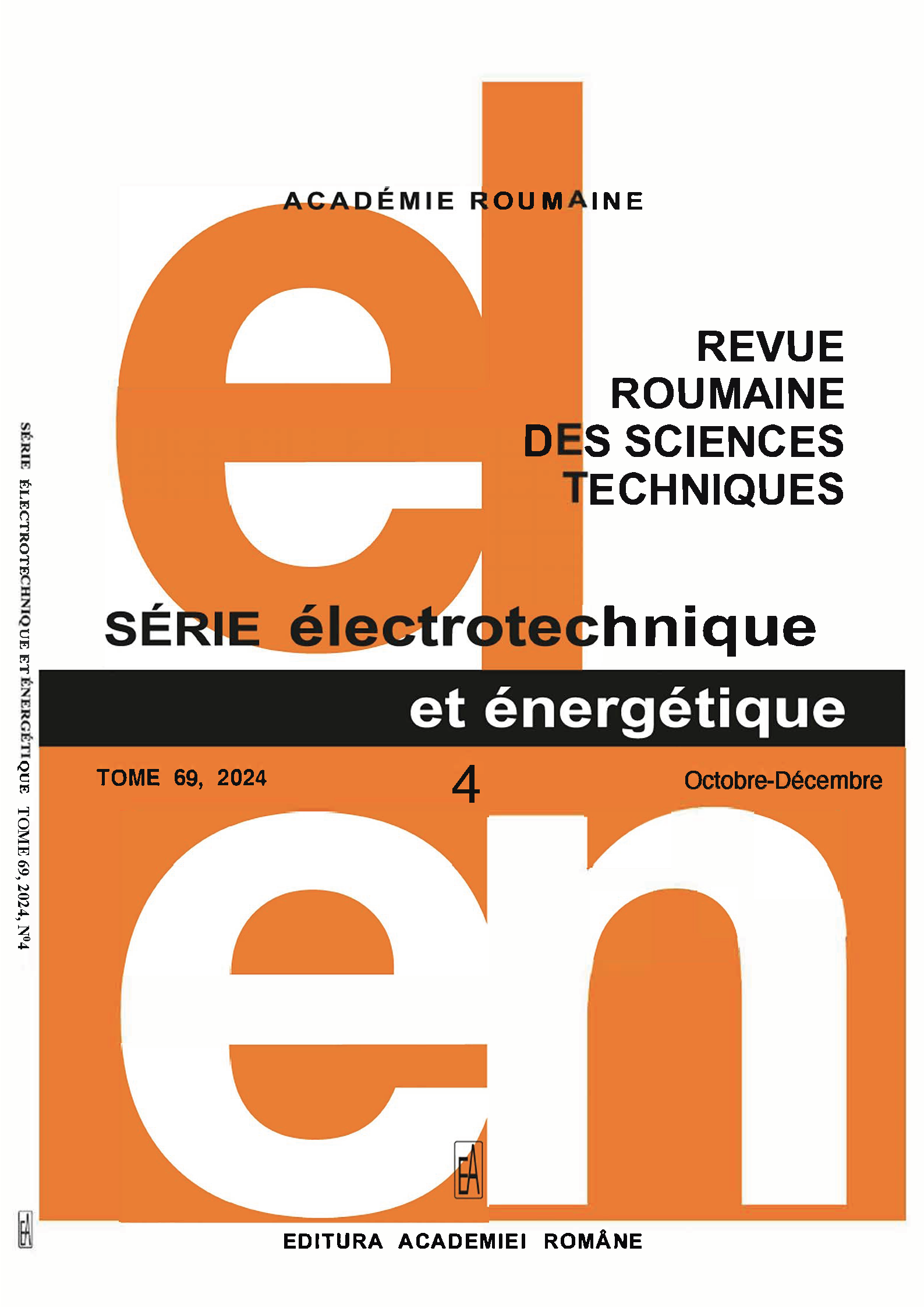REAL-VALUED DAMPED SINUSOID PARAMETER ESTIMATION USING A THREE-POINT INTERPOLATED DISCRETE FOURIER TRANSFORM ALGORITHM
DOI:
https://doi.org/10.59277/RRST-EE.2024.69.4.1Keywords:
Discrete Fourier transform (DFT)-based algorithms, Parameter estimation, Real-valued damped sinusoids, Statistical and error analysis, WindowingAbstract
This paper proposes new real-valued damped sinusoid frequency and damping factor estimators. They exploit a three-point Interpolated discrete Fourier transform (IpDFT) algorithm based on the Rife-Vincent class I (RVCI) windows and complex-valued DFT samples. The accuracies of the proposed estimators are compared with those provided by other state-of-the-art interpolated Fourier algorithms using computer simulations when pure, noisy, and noisy and harmonically distorted damped sinusoids are analyzed.
References
(1) J.C. Visschers, E. Wilson, T. Connelly, A. Mudrov, L. Bougasi, Rapid parameter determination of discrete damped sinusoidal oscillations, Optics Express, 29, 5, pp. 6863-6878 (2021).
(2) H. Günther, NMR spectroscopy: basic principles, concepts and applications in chemistry, John Wiley & Sons (2013).
(3) E. Aboutanios, Estimation of the frequency and decay factor of a decaying exponential in noise, IEEE Trans. Signal Process., 58, 2, pp. 501–509 (2010).
(4) E. Aboutanios, Estimating the parameters of sinusoids and decaying sinusoids in noise, IEEE Instrum. Meas. Mag., 14, 2, pp. 8–14 (2011).
(5) D. Agrež, Estimation of parameters of the weakly damped sinusoidal signals in the frequency domain, Computer, Standards & Interfaces, 33, pp. 117-121 (2011).
(6) K. Duda, T.P. Zielinski, L.B. Magalas, M. Majewski, DFT based estimation of damped oscillation’s parameters in low frequency mechanical spectroscopy, IEEE Trans. Instrum. Meas., 60, 11, 2011, pp. 3608–3618 (2011).
(7) M. Bertocco, C. Offeli, D. Petri, Analysis of damped sinusoidal signals via a frequency-domain interpolation algorithm, IEEE Trans. Instrum. Meas., 43, 2, pp. 245–250 (1994).
(8) K. Wang, H. Wen, L. Xu, L.Wang, Two points interpolated DFT algorithm for accurate estimation of Damping Factor and Frequency, IEEE Signal Process Letter, 28, pp. 499-502 (2021).
(9) R. Diao, Q. Meng, H. Fan, Interpolation algorithms based on Rife-Vincent window for discrete Fourier transforms of damped signals (in Chinese), Journal of Mechanical Engineering, 51, 4, (2015).
(10) D. Belega, D. Petri, Fast interpolated DTFT estimators of frequency and damping factor of real-valued damped sinusoids, Measurement, 217, (2023).
(11) C. Offelli, D. Petri, Interpolation techniques for real-time multifrequency waveform analysis, IEEE Trans. Instrum. Meas., 39, 1, pp. 106-111 (1990).
(12) F.J. Harris, On the use of windows for harmonic analysis with the discrete Fourier transform, Proceedings of the IEEE, 66, 1, pp. 51–83 (1978).
(13) A.H. Nuttall, Some windows with very good sidelobe behavior, IEEE Trans. Acoust. Speech Signal Process. ASSP, 29, 1 pp.84–91 (1981).
(14) D.C. Rife, G.A. Vincent, Use of the discrete Fourier transform in the measurement of frequencies and levels of tones, Bell Syst. Tech. J, 49, pp. 197-228 (1970).
(15) D. Belega, D. Petri, D. Dallet, Impact of harmonics on the interpolated DFT frequency estimator, Mechanical Systems and Signal Processing, 66-67, pp. 349-360 (2016).
(16) D. Belega, D. Petri, Effect of noise and harmonics on sine-wave frequency estimation by interpolated DFT algorithms based on few observed cycles, Signal Processing, 140, pp. 207-218 (2017).
(17) D. Belega, D. Dallet, Multifrequency signal analysis by interpolated DFT method with maximum sidelobe decay windows, Measurement, 42, 3, pp. 42 0-426 (2009).
(18) Y. Yao, S.M. Pandit, Cramér-Rao lower bounds for a damped sinusoidal process, IEEE Trans. Signal Process., 43, 4, pp. 878–885 (1995).
Downloads
Published
Issue
Section
License
Copyright (c) 2024 REVUE ROUMAINE DES SCIENCES TECHNIQUES — SÉRIE ÉLECTROTECHNIQUE ET ÉNERGÉTIQUE

This work is licensed under a Creative Commons Attribution-NonCommercial-NoDerivatives 4.0 International License.


